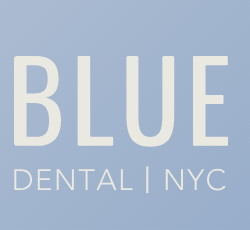Discolored Teeth (Stains & Darkening) on the Upper East Side, Manhattan
Why Choose Dr. Min for Discoloration
- Columbia-trained prosthodontist blending conservative whitening with esthetic restorations when needed.
- Award-winning precision and military-honed discipline—expect meticulous shade planning and clear timelines.
- Cause-first approach: diagnose why teeth look dark (stain, enamel wear, internal changes) before treating.
- Digital shade mapping (photos/scans) for predictable, natural-looking results.
What Counts as “Discolored Teeth”?
Color changes may be extrinsic (surface stains from coffee/tea, wine, smoking) or intrinsic (within the tooth: aging dentin, fluorosis, tetracycline bands, trauma, root-canal tooth darkening). Many smiles have a mix of both.
Common Causes
- Coffee/tea, red wine, cola, smoking or vaping
- Enamel thinning/erosion revealing yellower dentin
- Developmental staining (fluorosis, tetracycline)
- Trauma or prior root canal (single dark tooth)
- Old, stained fillings or leaking margins
- Plaque/tartar accumulation from missed cleanings
How We Diagnose
- Smile photos and digital shade analysis
- Enamel vs dentin evaluation; translucency and banding patterns
- Check for leaking restorations, cavities, or erosion
- Per-tooth assessment to flag teeth that may not whiten evenly (plan alternatives)
Treatment Options We Provide
Whitening (First-Line for Extrinsic/General Yellowing)
- In-office whitening: controlled, fast results for events and deeper color lift
- Custom take-home trays: gradual brightening; great for maintenance
- Combo protocols: in-office jumpstart + trays for longest-lasting results
- Internal bleaching for a single dark root-canal tooth
Conservative Esthetic Add-Ons
- Microabrasion / resin infiltration for superficial white/brown spots
- Cosmetic bonding to mask resistant bands, reshape edges, or close small gaps after whitening
- Porcelain veneers when intrinsic stains are severe or enamel is thin
- Replacement of stained/old fillings to match the new shade
Foundation Care
- Professional cleaning/polish to remove tartar and surface stain before whitening
- Erosion/dry-mouth counseling so brightness lasts
The Process at a Glance
1) Shade Plan & Cleaning
Baseline photos, shade map, and a thorough cleaning for a fresh starting point.
2) Whitening Phase
In-office session and/or custom trays with clear daily wear instructions.
3) Re-Shade & Refine
Assess results; treat stubborn spots (microabrasion/infiltration) or add bonding as needed.
4) Long-Term Finish
Consider veneers for intrinsic stains that don’t respond; craft a maintenance plan.
Who’s a Good Candidate?
- Healthy teeth and gums, realistic shade goals
- Extrinsic stain or natural yellowing with age
- Single dark tooth after trauma/root canal (candidate for internal bleach)
- Intrinsic stains (fluorosis/tetracycline) willing to combine whitening with bonding or veneers
Timeline & Comfort
- In-office whitening: about 90 minutes total chair time.
- Take-home trays: 7–14 days typical to see full change.
- Temporary cold sensitivity is common and manageable; desensitizers included.
Materials & Esthetics
- pH-balanced whitening gels, BPA-free bonding resins
- High-strength porcelain (when indicated) crafted for lifelike translucency
- Shade-locking polish and precise margin control for natural blends
Cost & Insurance
- Transparent, itemized estimates; whitening is often elective.
- Necessary replacements (old stained fillings) may receive PPO coverage; veneers are typically cosmetic.
- Flexible payment options; phased plans available.
Aftercare & Color Maintenance
- First 48 hours: avoid strong chromogens (coffee, tea, wine, berries, curries).
- Use a non-abrasive fluoride toothpaste; touch-up trays a few nights every few months.
- Rinse after dark beverages; consider a straw.
- Keep 6-month cleanings; bring trays for gel refills as needed.
- Note: postpone whitening during pregnancy/breastfeeding; smokers may need more frequent maintenance.
Frequently Asked Questions
How white can I go?
Teeth have a natural limit. We target a believable shade that fits your skin tone and eyes for a balanced look.
Will crowns or veneers whiten?
No—ceramics/composites don’t bleach. We whiten first, then
match or replace restorations to the new shade.
What if one front tooth stays darker?
A prior trauma or root canal may require
internal bleaching or a veneer/crown for perfect symmetry.
Will sensitivity last?
It’s usually brief. We tailor gel strength, add desensitizers, and can stagger sessions to keep you comfortable.
About Dr. Daniel Min
BA, University of Texas at Austin
DDS, University of Texas (American Esthetic Dental Association award; “Student of the Year” in clinical performance)
MS in Prosthodontics, Columbia University; former part-time clinical professor
U.S. Army veteran; current Army Reserve officer
Member: Academy of Prosthodontics; International Congress of Oral Implantologists
Service Area
Conveniently located on the Upper East Side and serving patients throughout Manhattan and the greater New York City area.
Call to Action
Ready for a brighter, natural-looking smile?
Book a discoloration consult to get a custom whitening plan—and seamless finishing touches when needed—for long-lasting confidence.

